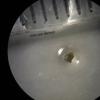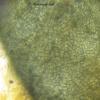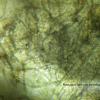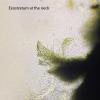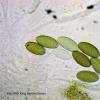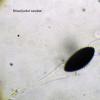
06-02-2017 20:07
Vivien HodgeThis Arnium was first found on 3-2-2017 on cow (Bo

06-02-2017 19:56
Hi to everybody. Hi Christian (by the way, what a

06-02-2017 06:44
Ethan CrensonIn Brooklyn, NYC on hardwood, possibly Fagus. In

06-02-2017 02:41
Ethan CrensonFound this on cones of Pinus sylvestris in Brookly

06-02-2017 10:50
 Blasco Rafael
Blasco Rafael
Hola, alguno de Ustedes dispone de estos Articulos

04-02-2017 17:54
Carmel SammutFound this ascomcete in the North of Malta growing

04-02-2017 11:20
 Bernard CLESSE
Bernard CLESSE
Bonjour à tous,J'imagine que c'est la bonne espè
The dung is from an area of unimproved chalk grassland being grazed by cattle.
Location was on the South Downs, near Steyning, West Sussex, England.
Lat, long: 50.886673, -0.347259.
Perithecia immersed with necks protruding above dung surface. Perithecia 0.5mm. to 1mm. in diameter. Necks black and glabrous, perithecia semi-translucent. Hyphoid hairs growing from peridium, brown, septate and flexuous.
Asci average 300 x 50 tapering at base, spores irregularly arranged. Spores black, 43.75 to 52.5 (57) x 20-24. Central germ pore at each end of spore.
One gelatinous cauda attached centrally at each end. Caudae noticeably broad at base, similar in width or slightly wider than spores, faint striae visible at base of some.
It seems to be a good fit for Arnium cirriferum, as per the record on Ascofrance database and ref. Doveri, Fungi Fimicoli Italici and Anne Bell Coprophilous Ascomycetes of Australia.
As far as I am aware this species has not been found in the UK before so it would be great if someone could confirm the determination or suggest what else it might be.
Thanks
Vivien

Your determination is correct; It is a very beautiful species that is not very often found.
Michel.
Yes, I think the caudae in particular are most elegant and attractive.
All the best
Vivien
